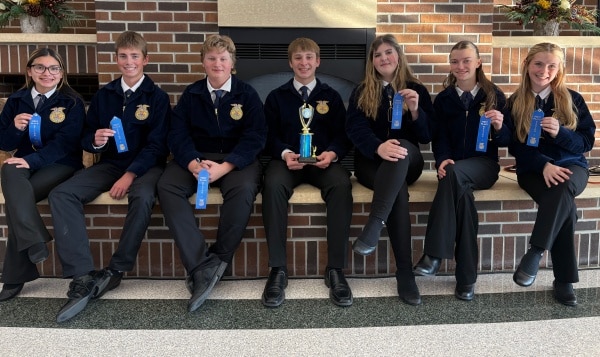Dry conditions continue to intensify, impacting crop and insect pest development. Despite delayed planting, corn development is ahead of normal. According to Dr. Jeff Coulter, a University of Minnesota Extension corn agronomist, warm temperatures during the early summer accelerated corn growth, and they are compensating for the late spring.
“The heart of the pollination period will occur next week,” he explains. While temperatures are expected to be favorable, it has continued to be very dry. Drought stress during this critical pollination period has the potential to reduce yield.
Fertilized kernels, especially near the tip of the ear, have a high demand for moisture. When plants are under drought stress, the end kernels may dry up, fade, and be lost. By mid-August, the crop should be past the critical pollination period and into the grain-filling period. While not as essential as the pollination period, drought stress during grain-filling can significantly reduce kernel size and yield.
Hail occurs in Minnesota each year, and 2023 is no exception. In corn, hail just before tasselling is a significant concern. Since most of the crop’s leaves have already emerged, there aren’t many new ones to replace the hail-damaged leaves. A hail-damaged crop could lose quite a few tassels and still have enough pollen to fertilize the silks if the remaining tassels are distributed evenly. Similarly, if the primary ear is damaged, the secondary ear often develops into the entire ear.
In hail-damaged fields, look for the degree of stalk damage, which can cause lodging later in the season. If damage is severe, consider harvesting those fields early. While there is variability in crop development, Coulter estimates that we’re on track for somewhat below- to average yields. However, it’s too early to make predictions with any confidence. From University of Minnesota Extension Soybean Entomologist Bob Koch’s perspective, it’s been an exciting year for soybean pests. It started with armyworms and shifted to problems linked to dry weather—moisture and temperature conditions significantly impact which soybean pests become issues and how their populations develop. Reports and concerns about grasshoppers have built as dry conditions have continued. Grasshoppers often move into fields from surrounding habitats and can cause significant defoliation.
Drought conditions also favor spider mites. While numbers had been low, some fields in western Minnesota recently started showing injury symptoms. Unlike these pests, soybean aphids don’t tolerate high temperatures. With moderating temperatures, population growth may be favored.
In recent years, Koch noted populations that would increase to about 100 aphids per plant and then plateau. Before this, populations would frequently skyrocket to very high levels. The new parasitic wasp or other natural enemies may reduce populations, but more information is needed. The bottom line is that fields need to be scouted to determine which areas have people that need to be treated. Research shows 250 aphids per plant are still a conservative economic threshold (ET) for protecting soybean yield. The ET is the trigger point for scheduling an insecticide application and is significantly lower than the level where economic injury occurs.
While it may be tempting to treat soybean aphids before ET is reached, spraying early has significant downsides. It kills beneficial insects and increases the risk for insecticide resistance development for the field’s soybean aphids and other pests.
The green clover worm has been the prominent caterpillar in Minnesota soybean. High numbers were reported in northwestern Minnesota this season. Soybean gall midge has been in the state for several years, though it’s found mainly in southwestern Minnesota. If you find its larvae, contact Koch at koch0125@umn.edu. The soybean tentiform leafminer is native to Minnesota but only recently decided to feed on soybean. The caterpillars feed inside the leaves, leaving a tented appearance on the upper leaf surface.
Thanks to the Minnesota Corn Growers Research and Promotion Council and the Minnesota Soybean Research and Promotion Council for their generous support of this program! Source: Phyllis Bongard, UMN Extension educational content development and communications specialist
For more news from U of M Extension, visit www.extension.umn.edu/news or contact Extension Communications at extdigest@umn.edu. The University of Minnesota Extension is an equal-opportunity educator and employer.




